#physician doctors
Text
Smart Clinic Franchise Opportunity | अपना Smart Clinic खोले
youtube
#smart clinic#Doctor#Smart doctor clinic#Doctor Clinic near by me#Smart Clinic near by me#every doctor#doctors#doctor set#doctor kit#baby doctor#doctor smart clinic videos#physician doctors#Smart clinic franchise Business Opportunity#Medical franchise#Youtube
2 notes
·
View notes
Text
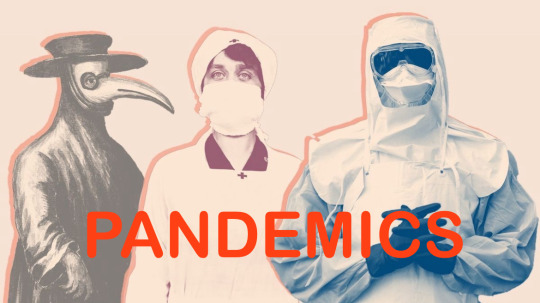
PANDEMICS- Hostile Power Takeover? Learnings on Urban & Domestic Warfare, “Disease: Bacteria Part 1, Fundamental Considerations”:
Let’s say the hostile power is more technologically advanced & half robot/half machine or full machine, so seemingly unkillable. Organic beings are very vulnerable to having disease used as a weapon against them.
Disease can be a major benefit to this type of hostile power & it would be an incredibly powerful weapon. This allows the destruction of an organic-based domestic population & it can also allow the harvesting of resources to build new bodies and/or reuse of the entire body depending on the disease process.
There are many insidious ways diseases develop & spread. This process DOES NOT just occur in a laboratory. Remember that there are many different “groupings” of entities we refer to as pathogens or things with the ability to cause disease.
Bacteria are an important one. Bacteria & other pathogens can reproduce by multiple means. Here I’m going to speak about bacteria with the capacity to do Bacterial conjugation. This involves passing characteristic between two different bacteria similar to how sexual reproduction can pass on characteristics. This is overall an important conversation because a lot of the most complex & common life forms in our daily lives also spread these characteristics through similar principles through sexual reproduction.
> A lot of bacteria to our awareness are able to pass on characteristics. Bacterial DNA contains the “instructions”/“resources” for bacteria to either have or not have characteristics.
-Bacterial conjugation for example allows one bacteria to attach to a second bacteria & send resources to the second bacteria. After this process, the second bacteria is able to transform and display the characteristics transferred to it. Example: Bacteria A can change colors like a chameleon. Bacteria B cannot change color. Once Bacteria A attaches to Bacteria B and they are compatible, Bacteria A passes on resources to Bacteria B. Bacteria B then acquires the ability to change color. Bacteria B now can change color & has attainted the same advantage as originally only bacteria A had. Now Bacteria A and Bacteria B can change color like a chameleon.
- The other way characteristics form & occur in a bacterial population is through mutation. If a bacteria’s DNA is altered or mutates then it can produce a bacteria with new traits & characteristics. Radiation for example, like from X-rays, often causes mutations. Sometimes mutations do “nothing” we can really perceive with our eyes. But overtime, they will eventually create large changes and can produce huge benefits for bacteria. For example: A bacteria could have always have been wiped out from nuclear weapons then overtime from mutations it can acquire the ability to survive living inside an area with nuclear radiation.
-This is a very important concept to fully understand so that you can become cognizant of how insidious this process is when discussing what bioterrorism in the modern world can look like. Pandemics are not caused just from mysterious lab leaks. The practices we do everyday are still contributing to the next pandemic occurring.
-This also gives everyone a better understanding of how MRSA or an antibiotic resistant bacteria really was “made” inside our hospitals.
> Bacteria can possibly have random or genetically engineered characteristics.
-If there are 100 random bacteria on an isolated surface that formed there naturally, some will have favorable characteristics to cause severe disease. But, some bacteria will not have those characteristics to cause severe disease. The bacteria lacking these deadly characteristics, but are still part of the same family of bacteria, would be considered weaker pathogens (weaker pathogen meaning they would cause less severe disease in organic beings).
-**But it is important to remember, If someone purposefully put bacteria down on a surface there is a chance it will not be a random distribution in strength of bacteria & they will mostly all be bacteria with strong characteristics. That group would probably be closer to 100 out of 100 of the bacteria carrying the deadly characteristic.**
>There are 2 main basic premises (which can be further subdivided and added onto when discussing what makes pathogens strong, but for now I’m discussing a more fundamentals explanation) we consider when determining bacterial pathogen strength: number of bacteria & the amount of deadly/harmful characteristics each bacteria possess.
-Reducing the overall number of bacteria in a group of random bacteria does not always mean you make a pathogen less strong. (Example: Purposefully killing 50 bacteria out of 100 and now there are only 50 bacteria in the group.)
If you destroy many of the weaker bacteria & only leave strong bacteria to reproduce, pathogens overtime can get stronger & more deadly. So, by destroying only the weaker bacteria in a group of bacteria, you slowly make pathogens stronger through this natural process & it doesn’t have to occur inside of a laboratory. To make a bacterial pathogen less strong by focusing on decreasing the overall number of those bacteria that exist in our world, you would also have to consider how many of each strength you eliminate. This is because we currently we do not use practices that wipe out groups of bacteria 100%, so we must consider these two elements together instead of separate when evaluating pathogen strength. Example: Lets say there are 100 bacteria and you wipe out 90. Bacteria A can cause humans to be paralyzed. Bacteria B cannot paralyze humans. Out of the 10 bacteria still alive, if all 10 are Bacteria A then you have eliminated the chance people would be infected with the less severe version of the disease, with Bacteria B. In the long term Bacteria A now has a strong chance to reproduce & when Bacteria A infects people it would then cause paralysis in everyone & the population could collapse. In another scenario, consider if you wiped out 90 bacteria out of 100, but you did it purposefully. Out of the 10 bacteria left, 9 were Bacteria that were Bacteria B & couldn’t cause paralysis. The last 1 out of the 10 left was Bacteria A. Then when those 10 bacteria reproduced it effectively helps “dilute” this negative characteristic in this bacterial family. Based off randomness & probability, when there this group reproduces to the size of 20 bacteria only approximately 2 of them may carry Bacteria A’s paralytic characteristic & 18 will carry bacteria B’s characteristic that does not cause paralysis. So, even though we can’t stop the bacteria number from growing, since we mindfully intervened we can still divert the trajectory of the pathogen from becoming a pathogen with the ability to become “pandemic level” and/or very very harmful.
>Two ways pathogens can get weaker is by lowering the amount of bacteria in the world & by lowering its severe disease characteristics, but this these two categories have an important interplay.
-This is an oversimplified explanation of how disease spreads & evolves, but the fundamental principles are VERY important to the overall understanding of what’s occurring. Imagine a group of bacteria you count has 100 total bacteria. 50 of them carry a gene to cause paralysis in humans & 50 do not carry this gene. When 100 people come in contact with the 50/50 bacteria distribution and get sick only 50 out of 100 of the people get paralyzed. This allows the other 50 people time to work on vaccinations & interventions to stop everyone from eventually being paralyzed.
-But, if you kill the 50 out of the 100 bacteria that do not carry the gene for paralysis then your bacteria group went from 100 to a total of 50 in size. In the short term the spread of the disease is likely to go down, as it is less likely people will randomly spread 50 objects instead of 100. BUT, those 50 bacteria with the gene to cause paralysis will only reproduce with other bacteria that also have that gene. So this bacteria, since you wiped out the 50 that don’t cause paralysis, now ALL cause paralysis & anyone who comes in contact with this bacteria strain will get paralyzed. So eventually with time the group of 50 bacteria will reproduce to 100 & spread at the same rate as they were originally, but now they cause more harm to people.
>When you unknowingly touch a colony of bacteria on an object or life form, you pick up a random sample of random “strength” of bacteria.
>****PLEASE READ: you can ALSO pickup a sample of bacteria that is all “strong bacteria” but this is NOT usually a natural occurrence you will see & is suggestive someone or something altered the bacteria and purposefully put those bacteria there. A group of bacteria that looks like it formed organically vs one that was purposefully placed there can be differentiated with taking samples of surfaces and people & counting how many strong bacteria vs weak bacteria there are, but we as a population do not regularly test for this in this way. Due to this I’m going to speak with the viewpoint of natural bacteria groups that have a gradient of “strengths”. In an ideal world we would identity groups of bacteria that have gradients of strength of bacteria vs groups of all similar strength, as interventions to stop them from becoming strong pathogens work DIFFERENTLY.)
>After you touch those bacteria they attempt to multiply and stay alive on you. Then if you touch other things they can be placed on another surface or thing. Sometimes they are placed on other surfaces in an environment or you touch your body & they are placed closer to an entrance to the inside or your body & then they are able to enter your body.
-This process will cause one of the following to occur: bacteria will stay in the area you touched & colonize it, they will die when attempting to enter the body, the bacteria will give you a disease , or in some cases the bacteria will live symbiotically inside you & help your body. If a bacteria lives symbiotically with you & does not cause harm then we do not refer to that as a pathogen, but rather just as a bacteria.
>Anytime you wipe out a group of bacteria by taking out 100% it causes that pathogen to get weaker overall, but the issue is that we do not do interventions that wipe out 100%.
-Currently anytime you clean an object in the hospital with a sanitizing wipe, you always kill less than 100% of the bacteria. This leaves behind a certain % of bacteria & they will be the strongest of that group of bacteria, because they were able to live even though you applied a cleaning product on them. This means the strongest bacteria left, even though there are less after cleaning, are now reproducing over and over again & getting stronger.
-So, when there is an environment with a large amount of bacteria variability (so all these new patients with new exposures to new bacteria that travel and touch things all the time), with shared equipment, with not 100% effective methods to destroy pathogens, & this long list of variables, we slowly produce very strong & deadly pathogens inside of hospitals.
-IF someone purposefully puts deadly bacteria ontop of a surface inside a hospital and it is a group of 100 strong & identical or cloned bacteria with no difference in genetics then wiping them out through imperfect cleaning will overall reduce pathogen deadliness. This is because there are no “stronger” pathogens vs “weaker” pathogens. They are all the same strength in this example and therefore will always get weaker when you reduce their number because they won’t reproduce to be more deadly.
>People often think when people are trying to cause them harm that would only occur when someone makes a pathogen in a lab & then deceptively goes and places some near you. This is not accurate.
-With knowing this do you see how for a hostile power there is actually LESS incentive to going through with all that work & instead a hostile power can abuse the system to cause harm? If you expect biological warfare to ONLY come out of a lab, this means you would be looking for the wrong patterns of behavior & pathogens will spiral out of control.
A lot of practices we currently use now unfortunately heavily contribute to this process that causes pathogens to get stronger.
#pathogens#doctor#medicine#physician assistant#nursing#nurse#registered nurse#evolution#disease#bacteria#np#nurse practitioner#pa#md#rn#meds#pharmacy
421 notes
·
View notes
Text
Smart Clinic Franchise Opportunity | अपना Smart Clinic खोले
youtube
#smart clinic#Doctor#Smart doctor clinic#Doctor Clinic near by me#Smart Clinic near by me#every doctor#doctors#doctor set#doctor kit#baby doctor#doctor smart clinic videos#physician doctors#Smart clinic franchise Business Opportunity#Medical franchise
1 note
·
View note
Photo
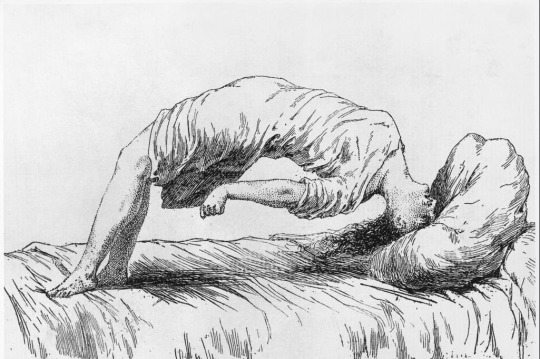
A drawing from a book by the french physicien Paul Regnard, 1884.
3K notes
·
View notes
Text

be sure to do your daily training if you can !!! 💪💪💪
#the timing of this app dropping is actually so funny bc#im in the process of meeting a dietician and physician to help w my physical health and chronic fatigue#and this was literally all it took for me to start exercising. which ive been struggling with for years#cant wait to break this to my doctors#femstars#genderbend#sora harukawa#tsumugi aoba#natsume sakasaki#switch#enstars#ensemble stars#my art
683 notes
·
View notes
Text
Funny how SCOTUS “originalists” ignore this history

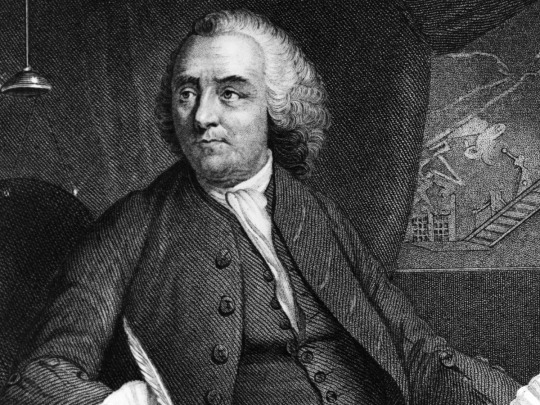
Benjamin Franklin is revered in history for his fixation on inventing practical ways to make everyday life easier. He was a prolific inventor and author, and spent his life tinkering and writing to share his knowledge with the masses.
One of the more surprising areas Franklin wanted to demystify for the average American? At-home abortions.
Molly Farrell is an associate professor of English at the Ohio State University and studies early American literature. She authored a recent Slate article that suggests Franklin’s role in facilitating at-home abortions all started with a popular British math textbook.
Titled The Instructor and written by George Fisher, which Farrell said was a pseudonym, the textbook was a catch-all manual that included plenty of useful information for the average person. It had the alphabet, basic arithmetic, recipes, and farriery (which is hoof care for horses). At the time, books were very expensive, and a general manual like this one was a practical choice for many families.
Franklin saw the value of this book, and decided to create an updated version for residents of the U.S, telling readers his goal was to make the text “more immediately useful to Americans.” This included updating city names, adding Colonial history, and other minor tweaks.
But as Farrell describes, the most significant change in the book was swapping out a section that included a medical textbook from London, with a Virginia medical handbook from 1734 called Every Man His Own Doctor: The Poor Planter’s Physician.
This medical handbook provided home remedies for a variety of ailments, allowing people to handle their more minor illnesses at home, like a fever or gout. One entry, however, was “for the suppression of the courses”, which Farrell discovered meant a missed menstrual period.

“The book starts to prescribe basically all of the best-known herbal abortifacients and contraceptives that were circulating at the time,” Farrell said. “It's just sort of a greatest hits of what 18th-century herbalists would have given a woman who wanted to end a pregnancy early.”
“It's very explicit, very detailed, also very accurate for the time in terms of what was known ... for how to end a pregnancy pretty early on.”
Including this information in a widely circulated guide for everyday life bears a significance to today’s heated debate over access to abortion and contraception in the United States. In particular, the leaked Supreme Court opinion that would overturn Roe v. Wade and states that “a right to abortion is not deeply rooted in the nation's histories and traditions.”
Farrell said the book was immensely popular, and she did not find any evidence of objections to the inclusion of the section.
“It didn't really bother anybody that a typical instructional manual could include material like this,”she said. “It just wasn't something to be remarked upon. It was just a part of everyday life.”
(continue reading) more ←
#politics#abortion#ben franklin#american history#scotus#textualists#originalists#roe v wade#mifepristone#abortifacients#reproductive rights#bodily autonomy#reproductive justice#healthcare#home abortions#for the suppression of the courses#every man his own doctor the poor planters physician#every man his own doctor
204 notes
·
View notes
Text
House MD makes for a way more interesting Sherlock adaptation than any other because it truly explores the depths of the character’s potential as a rude, selfish sociopath by making him American
#bbc britlock is cool and all but he’s way too polite and considerate for a so-called maniac#nobody encapsulates a true disregard for human well-being like a US healthcare professional ❤️#if you’re a non-american house viewer I want you to know that I’d rather be at princeton-plainsboro’s nightmare clinic#where the doctor will prescribe you cigarettes and call you slurs#and is only there as a punishment that he’s receiving for violating the geneva convention#than ever be treated by some of the real-life physicians I’ve encountered irl#house md#greg house#gregory house#hatecrimes md
175 notes
·
View notes
Photo
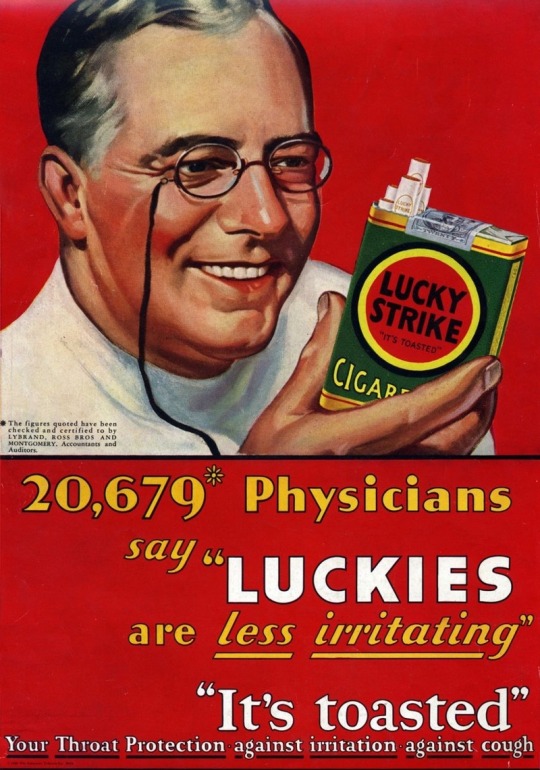
The American Tobacco Co, 1930
#Lucky Strike#ad#1930#cigarettes#advertisement#smoking#doctor#vintage#1930s#Luckies#toasted#physicians#cigarette#advertising
723 notes
·
View notes
Text
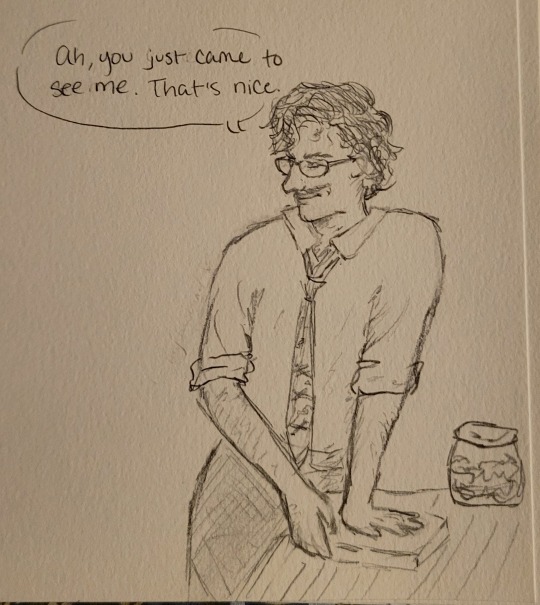
I drew my very successful doctor husband
Love him
#stardew#stardew valley#stardew valley harvey#sdv harvey#i love my pcp#such a great doctor#ily harvey#my pookie bear#♡my physician♡#he has planes on his tie#sdv fanart#sdv harvey fanart#harvey x farmer
78 notes
·
View notes
Text

Saint Pantaleon
275-305
Feast Day: July 27
Patronage: physicians, midwives, livestock, against headaches, consumption, locust, witchcraft, accidents, loneliness, crying children
Saint Pantaleon, one of the 14 Holy Helpers, was born near the Black Sea in Asia to a wealthy pagan father and Christian mother who taught him the faith. As a physician to Emperor Maximianus, Pantaleon became estranged from Christianity through the influences of being in his service. With the help of a holy priest named Hermolaos, Pantaleon reverted back to the faith and gave his fortune and services to the poor. He was martyred during the Diocletian persecution after he implored heaven to forgive his persecutors. He is known as the “Great Martyr”, a “Wonder-Worker” and “Pantaleon the Healer”.
Prints, plaques & holy cards available for purchase here: (website)
36 notes
·
View notes
Text

#heard in the emergency room#heardintheemergencyroom#emergency medicine#medical humor#doctor#physician assistant
53 notes
·
View notes
Text
Man a long while back I was at the doctors and he asked how much I drink and I gave whatever vague answer like idk it depends a few drinks a few times a week and he verbatim was like “that’s fine for now 25 drinks a week for a male your age is considered acceptable just watch it as you get older” and even I was sitting there thinking I don’t think that’s ethical to tell someone but okay
25 notes
·
View notes
Text
When you’re burnt out from working 80 hours a week and on the edge of losing your damn mind from sleep deprivation but then someone gives you a small snack or you have time to sit down and drink a cup of water:

Today I had the chance to drink a whole cup of water between OR cases and I almost cried of happiness. When the highlight of your day is that you had the chance to pee once, something is wrong.
Residents like me work 80 hours a week (sometimes more) for what calculates out to be less than minimum wage because this is how residencies are structured and because we are the last line between patients and unsafe care. You didn’t hire enough nurses? Have the resident remove/place foleys and NG tubes. You didn’t hire enough transport staff? Have the resident transport patients. I can’t in good conscience let my patients have less than the standard of care, but it becomes unsustainable when you don’t have enough staff. To top this all off, my hospital CEO got a raise of millions of dollars this year, but my raise to next year doesn’t even keep up with inflation. People justify this treatment of residents by saying that oh well we will be rich when we’re attendings, as if having a higher salary in the future justifies this kind of exploitation. I know residents right now who are struggling to afford healthcare for their children, who struggle to find affordable housing within the area we are required to live because of home call. There is simply no justification for the amount of work we do compared with our pay (or the hours we work period).
Maybe this is just a long way of saying please be kind to residents in the hospital. We work really hard within a really broken system and care a lot about our patients.
#medical school#residency#medstudent#medschool#medicine#medicalstudent#medical student#healthcare#resident doctors#physician#covid 19#covid19#doctor#surgery#burnout#insurance#health insurance
306 notes
·
View notes
Text

dr.j.e.w
56 notes
·
View notes
Text
Me, drawing Hiori in a floor length skirt: "i-its historically accurate... I swear......"
#i mean it IS#its really hard to find references for what physicians wore so hes a kind of aesthetic mix between a plague doctor and an apothecary
21 notes
·
View notes
Link
TSC News TV host Fred Richani interviews Saving AlGeneina Initiative manager Sadeia Hamid about her grassroots organization helping Sudanese refugees and internally displaced peoples within Sudan and Chad, the Sudanese crisis encompassing war, genocide, famine, and occupation, the instability before/during/after former President Omar al-Bashir, as well as how YOU can help donate volunteer for this amazing cause.
✅Donation: https://linktr.ee/SavingAlGeneina
✅Donate via PayPal: https://www.paypal.com/paypalme/SadeiaAli
✅Saving AlGeneina IG: https://www.instagram.com/saving.algeneina
✅TikTok: https://www.tiktok.com/@savingalgeneina
✅Twitter/X: https://x.com/sadiea8
00:00 Introducing Sadeia Hamid and Saving AlGeneina Initiative
03:48 Sudan's instability, war since 2023
05:24 Evacuating Sudanese refugees, Chadian border, displacement
06:35 Sudan under illegal occupation, massacres
08:03 Sudanese famine, plagues
10:15 United Nations not helping Sudan, Doctors Without Borders
13:56 Sudan has no real government, shady nonprofit organizations
14:56 Saving AlGeneina's initiatives - medical clinics, food, sports
15:35 Partnering with Sudanese American Physicians Association, famine
17:24 Saving AlGeneina Initiative's sports programs for children, mental health
19:00 Sadeia Hamid on building mobile medical clinic for Sudanese refugees
20:38 Sudanese children's trauma, lack of schools, education
22:36 Challenges with getting aid into Sudan
23:41 Difficulty registering Saving AlGeneina Initiative in Sudan
25:34 Don't turn your back on Sudan, Keep Eyes on Sudan
26:25 Donate and volunteer to Saving AlGeneina Initiative
#keep eyes on sudan#saving algeneina initiative#tsc news#tsc gaming ent#mnn#fred richani#sapa#sudanese american physicians association#msf#doctors without borders#sudan#sudanese#richani#tsc
16 notes
·
View notes